プロジェクトProjects
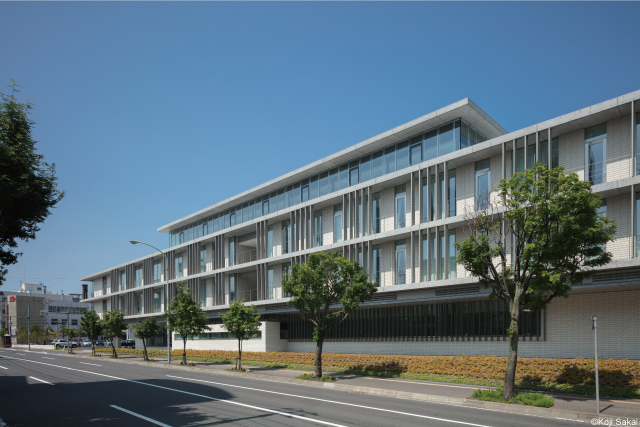
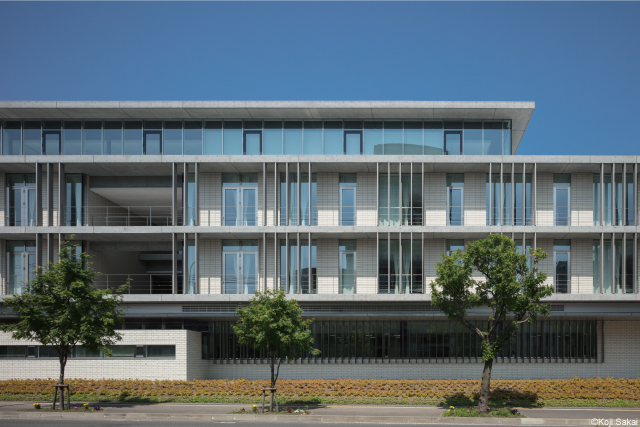
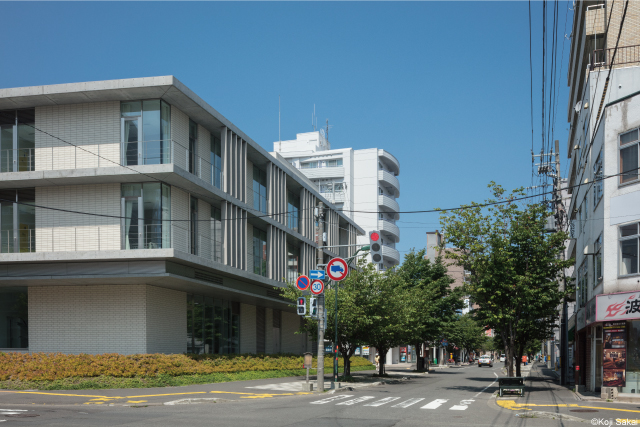
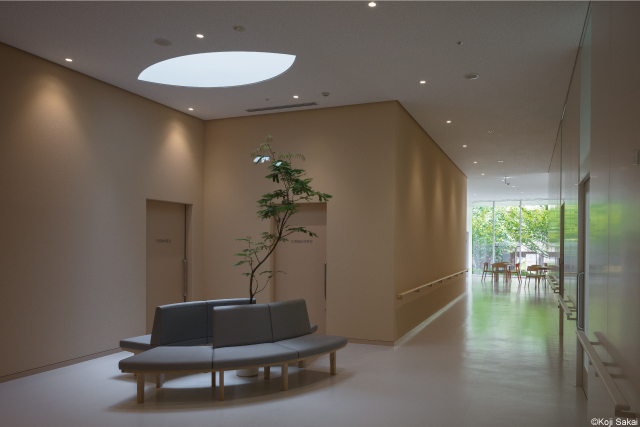
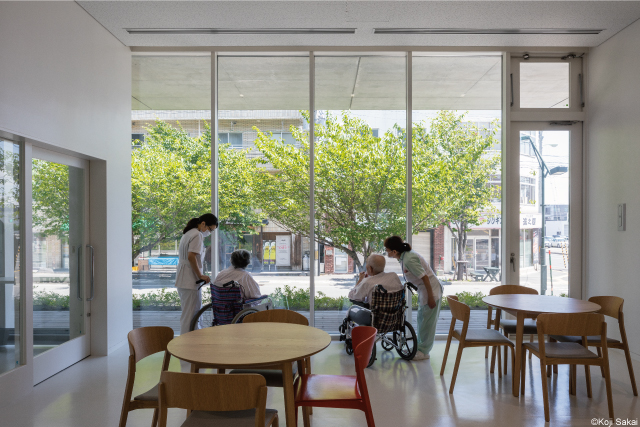
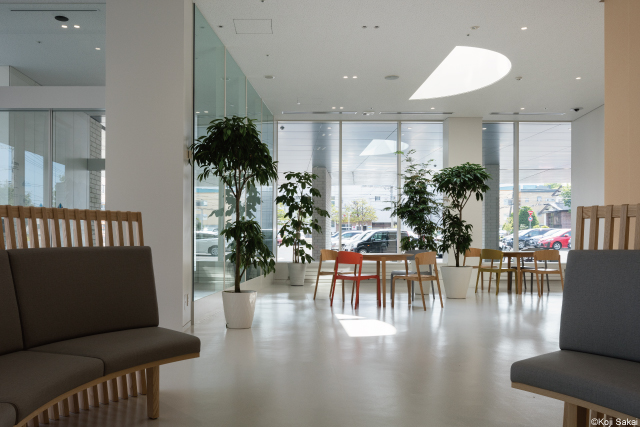
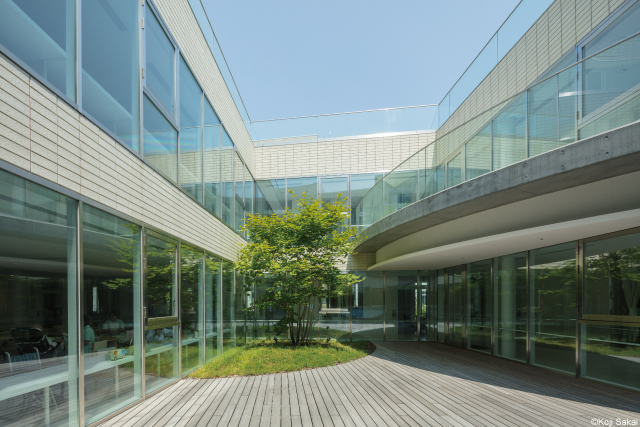
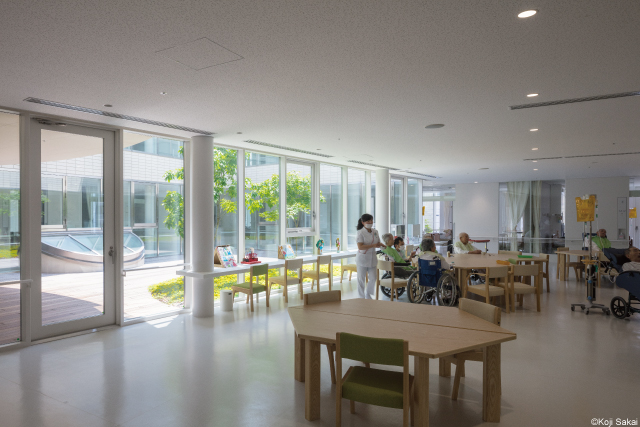
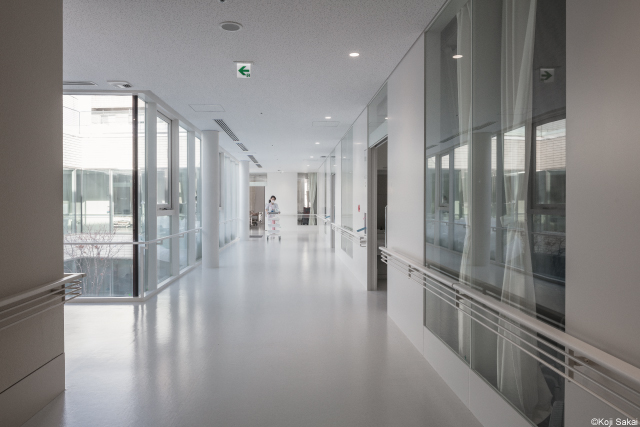
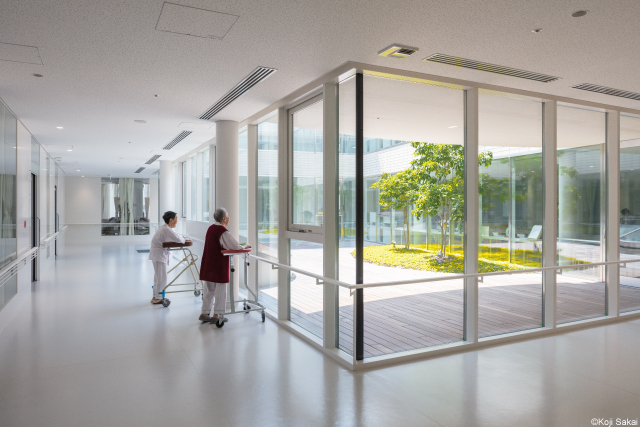
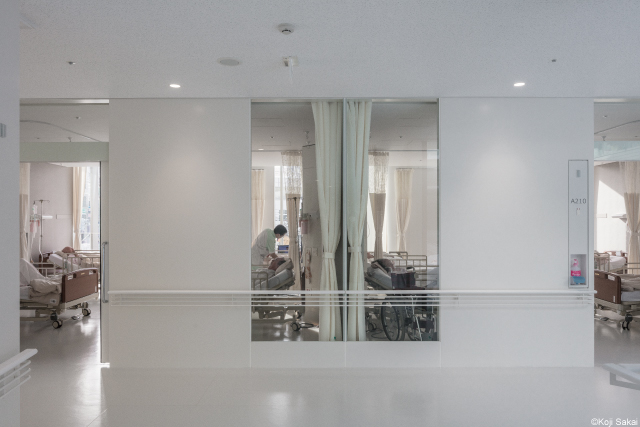
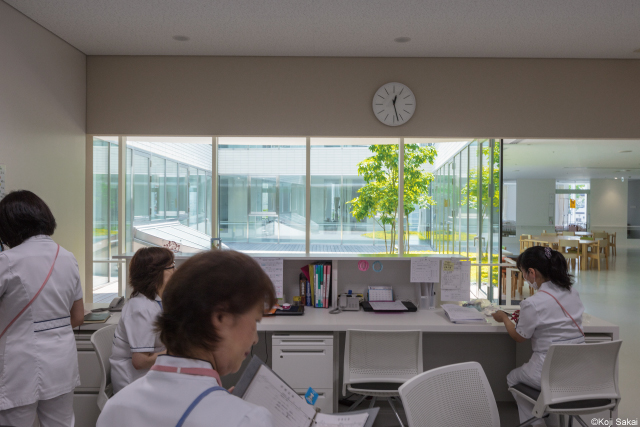
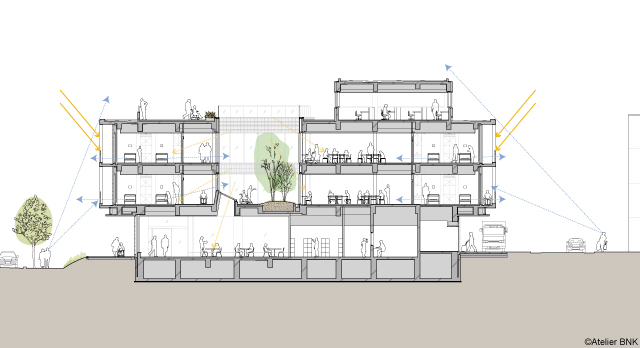
幌東病院
2017
北海道札幌市
構 造:鉄筋コンクリート造 + 鉄骨造
階 数:地下1階、地上4階、塔屋1階
延床面積:9,822㎡
金箱構造設計( 構造設計 )
アトリエブンク + 総合設備計画( 設備設計 )
プラッツ( 外構設計 )
遠藤照明( 照明計画 )
伊藤千織+匠工芸( 家具 )
札幌市内における、240床の病床を持つ慢性期病院の建替え計画である。慢性期病院では寝たきり、認知症などの要介護高齢者や虚弱高齢者などを含み、在院日数が長期にわたる特徴がある。この計画では、在院する方々が四季の変化を感じながら前向きな気分になり、元の生活に戻るイメージを持てる場となることを目指した。
敷地周辺は低層の住宅地であることから、建物高さを抑え住宅スケールに合わせた配置計画とした。エントランスや外来、サービス部門がある1階部分は雪から守られた深い庇による雁木、ピロティ空間を外周に回し、敷地が面する北側商店街や東側幹線道路とつながることを意識した。2、3階には、中庭を中心にした60床の病棟2つを配置した。全ての病室が四周の街路に面することで、常にまちを意識することができる関係をつくった。セットバックした4階部分にはリハビリや多目的ホール、職員の管理部門などをまとめ、南北2つの屋上テラスを設けた。
病院建築では自然換気を行わず管理された空気環境での生活が一般的であるが、本院では夏季にストレッチャーや車椅子利用者を外に連れ出すことを積極的に行ってきた。このような活動を手がかりに、外気に触れる場所として2つの中庭、見晴らしの良い屋上テラス、接地性の高い庇下空間を計画した。一方寒さが厳しい冬季間は、院内ツアーと称して館内を巡ることができる場所を点在させた。中庭に連続したディルーム、商店街に面する1階ラウンジ、屋上テラスに面するミーティングルーム、これらを結ぶ移動空間から季節の気配やまちの風景を感じることができる。
一般的な4床室の形式では、窓側ベッドと廊下側ベッドの居住性に大きな格差ができる問題がある。今回計画では廊下側ベッド部分に開口部を設けることで、中庭からの間接光を廊下内で拡散させながら廊下側ベッドへと導いた。カーテンによるプライバシーを確保しながら光や視線が得られ、窓側ベッドに比べ落ち着いた場となった。一方窓側ベッドでは、バルコニーと縦ルーバーを組み合わせて日射遮蔽とプライバシー確保を行った。このバルコニー部分は緊急時の避難や救助を兼ねた多機能なファサードとなる。その表情が、街並みに積極的に参加する新しい病院の顔となることを意識した。
北海道福祉のまちづくり賞
北海道優秀照明施設賞
日本建築学会作品選集2019
建築ジャーナル2018年10月号
新建築2017年12月号
JIA建築年鑑2019-2020( 日本建築家協会優秀建築選100選 )
Koto Hospital
2017
Sapporo-shi, Hokkaido
Structure:RC+S
Floor:1 basement, 4 Floors, penthouse
Floor Area:9,822㎡
Kanebako Structural Engineers( Structural Design )
Atelier BNK+Sogo Consultants( Mechanical & Electrical Engineering )
Platz( Landscape Design)
Endo Lighting( Lighting Planning )
Chiori Ito + Takumi Kohgei( Furniture )
Our plan involved the reconstruction of a 240-bed long-term care hospital in Sapporo. A distinctive feature of this type of hospital is that it caters for patients requiring long-term care such as the bedridden, elderly and those with dementia. This plan aimed at creating a space in which the hospitalized patients could enjoy the four seasons, creating a positive attitude and allowing them to imagine returning to their everyday lives.
Since the area around the site is a low-rise residential area, we reduced the building height according to the scale of the surrounding housing. The first floor, consisting of the entrance, and outpatient and service departments, has deep eaves as protection from the snow and is surrounded by a covered alleyway and pilotis space. We were conscious of connecting this floor to the shopping district to the north and arterial road on the east side. Two 60-bed wards are built around a central courtyard on both the 2nd and 3rd floors. By having all rooms facing the streets on the four sides, we could create a space in which the patients are constantly aware of the city around them. The rehabilitation department, multipurpose hall, and administrative department were gathered in the recessed 4th floor along with north and south roof terraces.
Hospital architecture does not allow for natural ventilation and patients usually live in a controlled air environment. However, this hospital actively encouraged patients to spend time outside in summer by use of wheelchairs and stretchers. With this in mind, we designed the two courtyards as spaces through which to communicate with the outside, as well as a rooftop terrace with a nice view and free from over-reaching eaves. Meanwhile, as the cold in the winter season is severe, we designed a so-called “hospital touring space” where patients can move around the facility. By linking the Day Room connected to the courtyard, the 1st floor Lounge facing the shopping district and the Meeting Room facing the rooftop terrace, patients can move freely and gain a sense of the changing seasons and city scenery.
In a general 4-bed ward, there is usually a marked difference in comfort between the window-side and corridor-side beds. In our plan, by providing an opening in wall along the corridor-side beds, indirect light from the courtyard was diffused throughout the corridor and across the beds. Light and a view could thus be obtained while securing privacy by use of curtains, giving the corridor-side beds a calmer atmosphere than that of the window-side beds. For the window-side beds, a balcony and vertical blinds were combined to provide shade and secure privacy. The balcony acts as a multifunctional facade that also serves as an evacuation route in case of emergency. Overall, the design expresses the concept of a new hospital that actively participates in the surrounding cityscape.
Hokkaido ‘Fukushi no Machizukuri’ Award
Hokkaido Excellent Lighting Building Award
2019 Selected Architectural Designs of the Architectural Institute of Japan
Kenchiku Journal Oct. 2018
Shinkenchiku Dec. 2017
Japan Architecture of the Year 2019-2020 selected by the JIA
